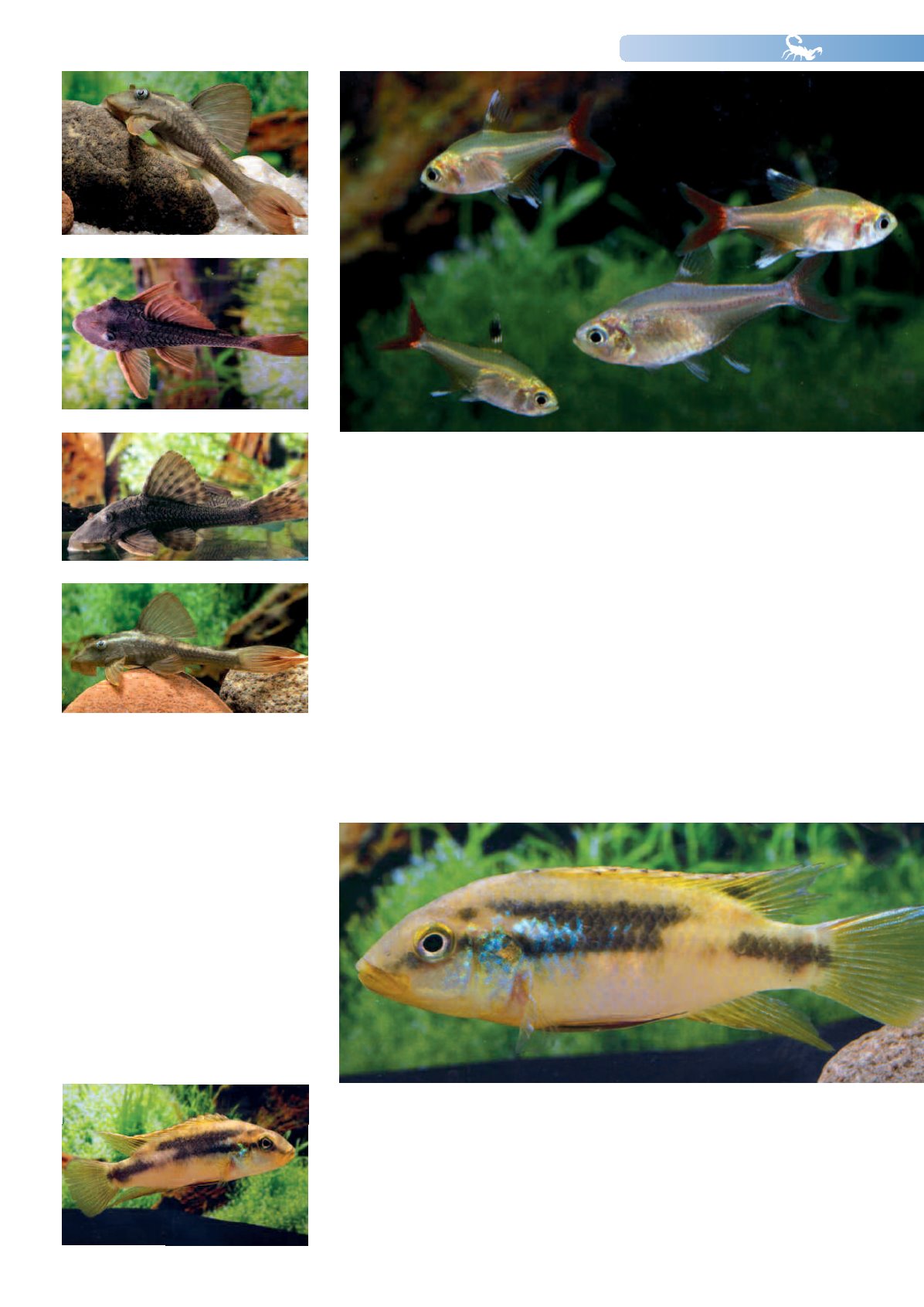
NEWS 110
25
L137
Hypostomus soniae / Cochliodon
soniae
The attractive blue-eyed L137 from the
Rio Tapajós is only very rarely imported. It
is a medium-sized
Hypostomus
species
that can grow to around 20 cm long. The
species is very variable in coloration, there
being specimens with brown fins, spotted
fins, and orange-red fins. The latter look
very similar to the "Bruno" from Paraguay
(Cochliodon sp.), but L137 can always be
identified unequivocally by the blue eyes,
unique within the genus
Hypostomus
.
Benitochromis finleyi Mungo
This medium-sized cichlid from Cameroon attains a maximum length of around 12 cm. These
splendidly colored fishes are biparental ovophilous mouthbrooders.
These fishes are astonishingly adaptable as regards water chemistry. They should be kept in
larger aquaria as they can be rather boisterous among themselves.
Hyphessobrycon axelrodi
This dainty dwarf characinwas originally described from the island of Trinidad.Maximum length
is around 2 cm in males and 3 cm in females. Aquarium Glaser has recently received a wild-
caught consignment of breathtaking fishes from Venezuela that accord very well with the
description of
H.axelrodi
, the Calypso Tetra; in 1992 the scientist Taphorn cautiously designated
this fish as
Megalamphodus cf.axelrodi
.
This tetra has made a veritable Odyssey where as far as its genus name is concerned. It was
originally described as
Aphyocharax
, then in 1977 Géry transferred it to the genus
Megalamphodus
,but with a questionmark.When the genus
Megalamphodus
was invalidatedby
Weitzman & Palmer in 1997,the CalypsoTetra was placed in
Hyphessobrycon.Megalamphodus
is
now regarded as valid again but the assignment of the Calypso Tetra to this genus still appears
questionable such that the majority of scientists currently place it in
Hyphessobrycon
.
Be all that as it may, it is a gorgeous and easy-to-keep fish,which could have been made for the
so-called nano-aquarium.


